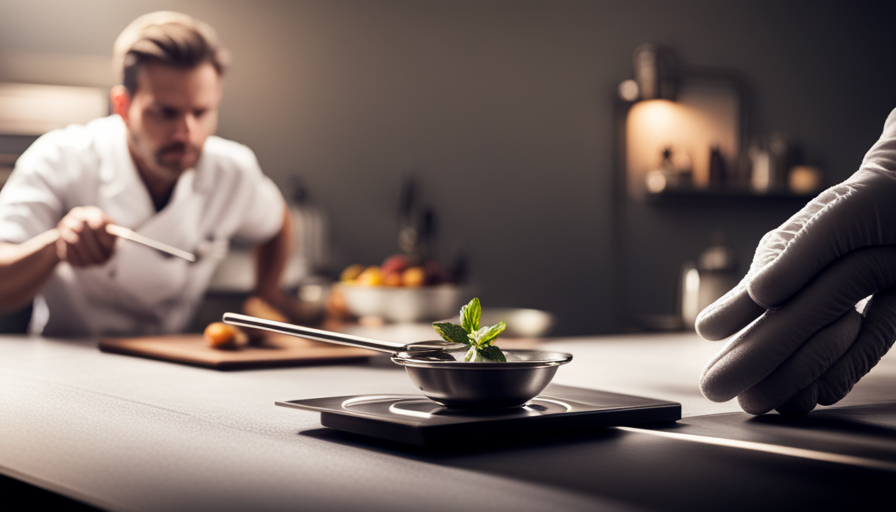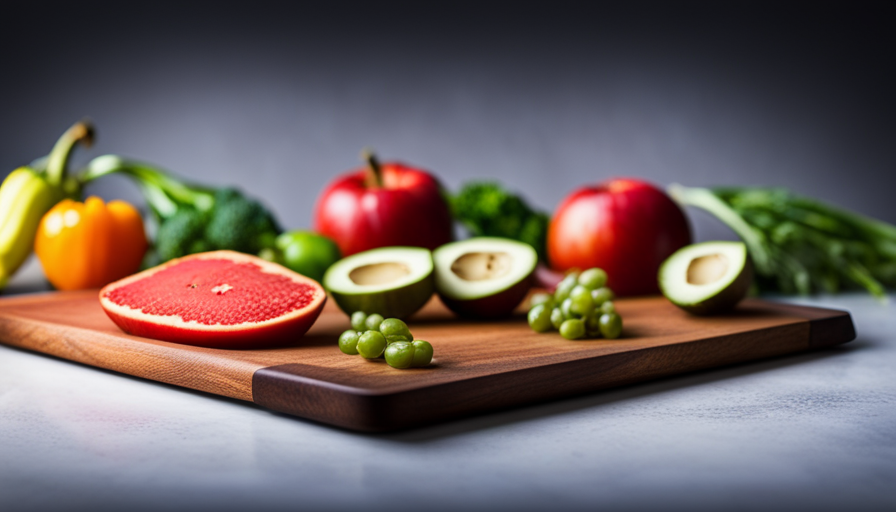Did you know that humans have been cooking food for over 2 million years? It’s a fact! Based on archaeological evidence, the use of fire for cooking can be traced back to the era of Homo erectus.
But how did early humans come up with the idea of cooking? In this article, we will explore the fascinating journey of how humans thought of ways to cook their food, besides just eating it raw.
The discovery of fire played a crucial role in this evolution. Fire not only provided warmth and protection, but it also transformed the way early humans consumed food. Alongside the discovery of fire, the evolution of tools such as stone knives and wooden spoons further facilitated cooking techniques.
Geography and climate also influenced the development of cooking methods. Different regions offered varied food sources, leading to diverse culinary practices. Furthermore, cooking food had health benefits, as it made it easier to digest and prevented foodborne illnesses.
Cultural and social influences also played a significant role in the evolution of cooking. Food preparation and consumption became a communal activity, fostering social bonds and cultural traditions. Additionally, the need to preserve and store food for longer periods led to the development of techniques such as smoking, drying, and fermenting.
Over time, taste and preference evolved, leading to the exploration of new flavors and spices. The role of innovation and creativity cannot be overlooked, as humans continuously experimented with new cooking techniques and ingredients.
Today, cooking has become an integral part of our lives, with countless recipes and culinary traditions passed down through generations. The journey of how humans thought of ways to cook their food has been a fascinating one, shaped by diverse factors such as the discovery of fire, the evolution of tools, cultural influences, and the quest for new flavors and tastes.
Join us as we delve deeper into this captivating topic and uncover the continued evolution of cooking.
Key Takeaways
- The discovery of fire revolutionized the way early humans consumed food, providing warmth, protection, and making food easier to digest.
- The development of tools and utensils facilitated cooking techniques and allowed for experimentation with new ingredients and flavors.
- Geography, climate, and cultural influences shaped cooking methods and culinary traditions based on the availability of food resources.
- Cooking not only improved the taste and digestibility of food but also played a crucial role in building communities, preserving cultural heritage, and fostering social bonds through the sharing of meals.
The Discovery of Fire
Get ready to embark on a fiery journey as we explore how humans discovered the incredible power of fire for cooking our food! The discovery of fire marks a pivotal moment in human history, transforming our diet and paving the way for the diverse culinary traditions we enjoy today. The exact origins of this discovery remain shrouded in mystery, but cultural influences likely played a significant role.
The discovery of fire was a game-changer for early humans. Not only did it provide warmth and protection, but it also revolutionized our approach to food. The ability to cook food over an open flame had numerous advantages. It made food easier to digest, preserved nutrients, and eliminated harmful bacteria, leading to improved health and increased lifespan.
Cultural influences also played a crucial role in the discovery of fire for cooking. As early humans began to migrate to different regions, they encountered new foods and environments. They quickly realized that certain foods were more palatable and safer to eat when cooked. Over time, this knowledge spread through cultural exchange, shaping the development of cooking techniques across different societies.
As our ancestors harnessed the power of fire, they began to experiment with tools to enhance their cooking methods. This marked the evolution of tools in the culinary world and laid the foundation for future advancements in food preparation. Stay tuned as we delve into the fascinating journey of how early humans developed innovative tools to further enhance their cooking techniques.
The Evolution of Tools
When it comes to the evolution of tools, primitive cooking tools played a crucial role in human history. These tools were essential for the early humans to cook their food and make it more palatable and easier to digest.
As time went on, advancements in cooking utensils further improved the efficiency and variety of cooking methods, allowing for a wider range of culinary possibilities.
Primitive Cooking Tools
Imagine the sheer brilliance that struck your primitive ancestors as they devised inventive ways to transform their raw food into mouth-watering delicacies using nothing but rudimentary cooking tools. Primitive cooking methods were essential for early food preparation. To understand the ingenuity of our ancestors, let’s take a look at some of the primitive cooking tools they used.
| Primitive Cooking Tools | Purpose |
|---|---|
| Fire pits | Used for roasting and boiling food |
| Clay pots | Ideal for slow cooking and stewing |
| Wooden skewers | Perfect for grilling meat and vegetables |
| Stone grinding tools | Used to grind grains into flour |
These simple yet effective tools allowed our ancestors to explore various cooking techniques, enhancing the taste and digestibility of their meals. With these primitive cooking tools, humans were able to unlock the potential of their food, opening up a whole new world of culinary possibilities. As we delve into advancements in cooking utensils, we will see how these early innovations laid the foundation for the sophisticated tools we use today.
Advancements in Cooking Utensils
Discover the remarkable evolution of cooking utensils and how they’ve revolutionized the way I prepare and enjoy my meals today.
From the primitive tools of the past to the advancements in kitchen appliances, the evolution of cooking techniques has been driven by the human desire for efficiency and convenience.
-
The invention of the gas stove allowed for precise temperature control, making it easier to cook a wide variety of dishes.
-
Non-stick cookware revolutionized cooking by reducing the need for excessive amounts of oil and making cleanup a breeze.
-
The introduction of electric appliances, such as blenders and food processors, made it possible to easily create complex recipes, saving both time and effort.
These advancements in cooking utensils haven’t just made cooking more efficient, but they’ve also expanded the possibilities of what can be achieved in the kitchen.
However, the influence of geography and climate also plays a significant role in shaping the way we cook and enjoy our food.
The Influence of Geography and Climate
The availability of food resources played a crucial role in the development of cooking techniques. As humans spread across different geographical regions, they encountered a wide variety of plants and animals that required different methods of preparation to make them edible.
For example, in colder climates, cooking food helped to break down tough fibers and make it easier to digest, while in warmer climates, cooking helped to kill harmful bacteria and parasites.
These environmental factors, along with the need to preserve and store food for longer periods, ultimately promoted the invention and refinement of cooking methods.
Availability of Food Resources
When you’re trying to figure out new ways to cook your food, consider that humans have been developing cooking techniques for thousands of years due to the abundance of food resources. This abundance of food resources allowed our ancestors to experiment with various cooking methods and discover the benefits of cooking.
Here are some intriguing facts that highlight the availability of food resources and its influence on cooking techniques:
-
Humans were able to gather a wide range of food resources such as fruits, vegetables, nuts, and seeds, which provided the opportunity to explore different cooking methods.
-
The abundance of fish and shellfish in coastal areas encouraged the development of techniques like smoking, drying, and grilling.
-
The availability of game animals like deer, bison, and rabbits led to the invention of techniques such as roasting, broiling, and stewing.
-
The discovery of fire made it possible to cook tough and fibrous plant foods, making them more palatable and easier to digest.
These food resources, along with environmental factors that promoted cooking, paved the way for humans to evolve their culinary skills and create diverse cooking techniques.
Environmental Factors that Promoted Cooking
Imagine how different your meals would be if our ancestors hadn’t considered the environmental factors that promoted cooking! The influence of cultural practices and the impact of technological advancements played crucial roles in the development of cooking methods.
In ancient times, humans were exposed to various environmental challenges such as extreme weather conditions and limited food resources. They realized that cooking food not only made it easier to consume but also helped in preserving it for longer periods. Moreover, cooking allowed our ancestors to adapt to different environments by making otherwise inedible foods more digestible.
Cultural practices further influenced cooking techniques, as different regions developed their own unique methods based on available resources and preferences. These practices were passed down through generations, contributing to the diverse culinary traditions we have today.
Transitioning to the subsequent section about the health benefits of cooking, it’s fascinating to explore how these early environmental considerations have shaped our well-being.
The Health Benefits of Cooking
Cooking food not only enhances its taste, but it also increases its nutritional value. Here are three health benefits of cooking:
-
Improved Digestibility: Cooking breaks down the complex carbohydrates, proteins, and fats present in food, making them easier for our bodies to digest and absorb. This allows us to extract more nutrients from the food we eat, promoting better overall health.
-
Increased Antioxidant Activity: Cooking certain foods like tomatoes, carrots, and spinach can actually increase their antioxidant activity. For example, cooking tomatoes converts the lycopene into a more bioavailable form, which has been linked to a reduced risk of certain cancers and heart disease.
-
Destruction of Harmful Microorganisms: Cooking food kills harmful bacteria, parasites, and viruses that can cause foodborne illnesses. Heating food to the right temperature ensures that it is safe to consume, protecting us from potential health risks.
These health benefits highlight the importance of cooking in maximizing the nutritional value of our food and safeguarding our well-being. Transitioning into the subsequent section about cultural and social influences, it’s fascinating to explore how these health benefits have shaped the way we cook and eat around the world.
Cultural and Social Influences
When it comes to sharing food and building communities, cooking plays a crucial role. The act of preparing and sharing meals brings people together, allowing for social interaction and connection. Through cooking, we’re able to nourish both our bodies and our relationships, fostering a sense of belonging and unity.
Additionally, cooking rituals and traditions are deeply ingrained in many cultures, serving as a way to preserve and pass down cultural heritage. These rituals often involve specific techniques, ingredients, and even utensils that hold significant meaning and value. By engaging in these rituals, we not only honor our ancestors but also create a sense of identity and belonging within our communities.
Sharing Food and Building Communities
To truly foster a sense of community and bond over shared meals, you must explore innovative ways of preparing and sharing food. Building relationships through food is a universal concept, as it allows individuals to connect and express their cultural identity.
Food has always played a significant role in shaping cultures and communities, acting as a medium for people to come together and share their traditions. Whether it’s a potluck dinner or a communal cooking event, these shared experiences around food create a sense of belonging and unity.
Moreover, food acts as a bridge between different cultures, allowing us to understand and appreciate diverse traditions. It is through the act of cooking and sharing meals that we can exchange ideas, stories, and values, further strengthening our connections.
As we delve into the next section on rituals and traditions around cooking, we will see how these shared experiences have shaped our culinary practices throughout history.
Rituals and Traditions Around Cooking
By embracing the rituals and traditions around preparing meals, you can immerse yourself in a rich tapestry of cultural practices that go beyond the mere act of cooking. Rituals and traditions play a significant role in shaping the way we cook and consume food.
Across different cultures, various rituals are observed before, during, and after meals, reflecting the cultural influences that have shaped culinary practices over time. These rituals might include prayers, blessings, or specific gestures performed during the cooking process. They serve as a way to connect with our ancestors, honor the ingredients, and create a sense of community and togetherness.
Cultural influences also impact the types of ingredients used, cooking techniques employed, and the way meals are shared. By understanding and partaking in these rituals and traditions, we gain a deeper appreciation for the culinary heritage of different cultures.
Transitioning to the subsequent section on the development of culinary techniques, we can see how these traditions have influenced the evolution of cooking methods.
The Development of Culinary Techniques
You can truly appreciate the rich history of culinary techniques that humans have developed, unlocking endless possibilities for transforming raw ingredients into delectable dishes. Geographical influences and cultural traditions played a significant role in shaping the development of these techniques.
Different regions around the world have their own unique cooking methods that have been passed down through generations.
In some parts of the world, the availability of certain ingredients influenced the culinary techniques used. For example, in coastal regions, the abundance of seafood led to the development of grilling and steaming techniques to preserve the delicate flavors of the fish. In contrast, in areas with a colder climate, slow cooking techniques like braising and stewing were favored to tenderize tougher cuts of meat.
Cultural traditions also played a crucial role in the development of culinary techniques. For instance, in Asian cuisine, stir-frying and wok cooking techniques were developed to quickly cook ingredients while preserving their natural flavors and nutrients. In Mediterranean cuisine, the use of olive oil and grilling techniques became popular due to the abundance of olive trees and sunny weather.
These geographical influences and cultural traditions laid the foundation for the diverse culinary techniques we have today. From roasting and baking to sautéing and frying, each technique brings its own unique flavors and textures to the table.
As we delve into the next section about the preservation and storage of food, we will discover how these techniques also played a role in extending the shelf life of ingredients.
Preservation and Storage of Food
When it comes to the preservation and storage of food, there are two key points to consider: extending the shelf life of food and creating new flavors and textures.
By finding ways to extend the shelf life of food, humans were able to store and consume food for longer periods of time, reducing the risk of spoilage and foodborne illnesses.
Additionally, through various preservation methods such as curing, pickling, and fermenting, humans were able to not only preserve food but also create new flavors and textures, enhancing the culinary experience.
Extending the Shelf Life of Food
To make your food last longer, I had to come up with clever ways to preserve it. Increasing sustainability and reducing waste were key factors in extending the shelf life of food.
One method that humans developed was drying food. By removing moisture, bacteria and mold growth were inhibited, preventing spoilage. This technique was used for various foods like meat, fruits, and vegetables.
Another method was salting food. Salt acted as a preservative by drawing out moisture from the food, creating an environment that was inhospitable to bacteria.
Humans also discovered that fermenting food could prolong its shelf life. This process involved the growth of beneficial bacteria or yeast, which produced acids or alcohol, inhibiting the growth of harmful bacteria.
These preservation techniques not only increased the longevity of food but also created new flavors and textures, enhancing the culinary experience.
Transitioning into the subsequent section, these preservation methods set the foundation for exploring different ways to create unique tastes and textures in food.
Creating New Flavors and Textures
Imagine the burst of flavor and the satisfying crunch that comes from biting into a perfectly pickled cucumber, a delightful result of the preservation techniques developed throughout history. To create new flavors and textures, humans have been exploring ingredients and experimenting with techniques for centuries.
Here are four ways in which culinary pioneers have pushed the boundaries of taste and texture:
-
Fermentation: By harnessing the power of microorganisms, fermented foods like kimchi and sauerkraut offer a tangy and complex flavor profile that enhances our taste buds.
-
Smoking: Smoking food not only preserves it but also imparts a smoky aroma and rich taste, as seen in smoked salmon or barbecue.
-
Caramelization: By applying heat to sugars, ingredients like onions and garlic transform into sweet, savory delights, adding depth to dishes.
-
Emulsification: Combining two seemingly incompatible ingredients, such as oil and vinegar, creates a smooth and creamy texture that elevates dressings and sauces.
These innovative techniques have shaped our culinary landscape, leading to the evolution of taste and preference.
The Evolution of Taste and Preference
Explore the fascinating story of how our ancestors developed a diverse range of cooking techniques to elevate the taste and preferences of their food.
The evolution of taste and preference is an intriguing subject that sheds light on how our ancestors’ culinary choices were influenced by factors such as cultural practices and availability of ingredients.
Taste preferences are not fixed but rather adapt and evolve over time. Our ancestors discovered new flavors and textures by experimenting with different cooking methods. They learned that cooking food not only made it more palatable but also enhanced its nutritional value. The ability to control fire allowed them to roast, grill, or smoke food, imparting unique flavors and aromas.
Cultural influences also played a significant role in shaping taste preferences. Different regions developed their own culinary traditions based on the availability of local ingredients and cultural practices. For example, the use of spices and herbs in Indian cuisine or the preference for fermented foods in East Asian cultures.
Understanding the evolution of taste and preference provides valuable insights into our culinary heritage and the way we enjoy food today. It highlights the importance of cultural diversity and the role it plays in shaping our culinary experiences.
As we delve further into the story of cooking, we will discover the role of innovation and creativity in expanding our culinary horizons.
The Role of Innovation and Creativity
When it comes to the evolution of taste and preference, the role of innovation and creativity can’t be overlooked. Culinary inventions and discoveries have played a significant role in shaping the way we cook and consume food.
From the invention of fire and the discovery of fermentation to the creation of new cooking techniques and flavor combinations, human ingenuity has constantly pushed the boundaries of what’s possible in the kitchen.
Additionally, our ability to adapt to new food sources has been crucial in expanding our culinary repertoire. As societies encountered new ingredients and food resources, they had to find creative ways to incorporate them into their diets, leading to the development of new dishes and cooking methods.
Culinary Inventions and Discoveries
Throughout history, humans have ingeniously devised various culinary inventions and discoveries to transform raw food into mouthwatering creations. The role of experimentation has been crucial in this process, as individuals have constantly sought new ways to enhance the flavors and textures of their food.
Cultural exchanges and influences have also played a significant role, as different societies have shared their culinary techniques and ingredients, leading to the development of new and exciting dishes. For example, the introduction of spices from the East to Europe during the Age of Exploration revolutionized the way food was prepared and consumed.
These culinary inventions and discoveries have not only satisfied our taste buds but have also allowed us to adapt to new food sources and expand our culinary horizons. As humans continue to innovate in the kitchen, we’re constantly finding new ways to elevate the dining experience.
Adapting to New Food Sources
Embrace the adventure of culinary innovation and discover the joy of transforming unfamiliar ingredients into delectable dishes. As humans, we’ve always been adaptable, constantly finding ways to survive and thrive in different environments. Adapting to new ingredients is no different.
When faced with unfamiliar food sources, we’ve been able to experiment with different cooking techniques to make them palatable and nutritious. Here are three examples:
-
Roasting: One of the earliest cooking techniques, roasting involves exposing food to direct heat, resulting in a rich, caramelized flavor and tender texture.
-
Fermentation: By fermenting certain ingredients, we can unlock new flavors and preserve food for longer periods. Fermented foods like kimchi and sauerkraut not only add depth to our meals but also provide beneficial bacteria for our gut health.
-
Sautéing: This quick and versatile technique involves cooking food in a small amount of hot oil. It allows us to cook new ingredients quickly while preserving their natural flavors and textures.
Through adapting to new ingredients and experimenting with cooking techniques, we’ve transformed the way we eat. This has laid the foundation for the continued evolution of cooking.
The Continued Evolution of Cooking
Discover the fascinating journey of how humans have transformed cooking into an art form that delights your taste buds and warms your soul.
The continued evolution of cooking has been driven by the role of experimentation, cultural significance, and symbolism. As we’ve adapted to new food sources, we’ve begun to experiment with different cooking techniques to enhance the flavors and textures of our meals.
The discovery of fire played a crucial role in this evolution. By harnessing fire, early humans were able to cook their food, making it more palatable and easier to digest. This not only provided a means of survival but also opened up a world of culinary possibilities.
Throughout history, different cultures have developed their own unique cooking methods and traditions. These cooking techniques often reflect the cultural significance and symbolism of the food being prepared. For example, in many Asian cultures, stir-frying is a common cooking technique that represents the importance of balance and harmony in both food and life.
Today, cooking has become an art form that combines technical skill with creativity. Chefs around the world experiment with flavors, textures, and presentation to create culinary masterpieces that tantalize the senses. From molecular gastronomy to fusion cuisine, the continued evolution of cooking shows no signs of slowing down.
The journey of how humans have transformed cooking is a testament to our ingenuity and desire for culinary excellence. Through experimentation, cultural significance, and symbolism, cooking has evolved into an art form that not only nourishes our bodies but also delights our taste buds and warms our souls.
Frequently Asked Questions
How did early humans initially discover that cooking food could be beneficial?
Initial experiments and accidental discoveries played a vital role in the early human understanding of the benefits of cooking food. Through trial and error, our ancestors stumbled upon the idea that cooking food made it tastier, easier to chew, and more digestible. By exposing food to heat, they likely noticed that it not only transformed the texture and flavor but also eliminated harmful bacteria. These early observations eventually led to the development of cooking techniques that have shaped our culinary traditions to this day.
What were some of the challenges early humans faced when cooking food?
Challenges faced during the evolution of cooking techniques were numerous. Early humans struggled with creating and controlling fire, finding suitable cooking vessels, and determining optimal cooking times. They had to experiment with different methods, such as roasting, boiling, and eventually baking.
This trial-and-error process required patience and innovation, as they had to adapt to various environments and available resources. Over time, they developed the knowledge and skills necessary to transform raw food into a safer and more flavorful source of sustenance.
Did different geographical regions have different cooking techniques?
Regional variations in cooking techniques were prevalent among early humans, showcasing their culinary adaptations. Different geographical regions developed unique ways of cooking food based on available resources and cultural practices.
For instance, in coastal areas, humans relied heavily on seafood and developed methods like smoking and drying to preserve it. Inland regions, on the other hand, focused on hunting and gathering, leading to techniques such as roasting and boiling.
These regional variations highlight the diverse ways in which early humans approached cooking.
How did cooking food contribute to the development of early human societies?
The development of culinary skills played a crucial role in the development of early human societies. As humans learned to cook food, they were able to access a wider variety of nutrients and increase their overall food security.
This led to improved health and longevity, which in turn supported population growth and the establishment of settled communities. Additionally, cooking food brought people together, fostering social interactions and the sharing of knowledge and cultural practices around food preparation and consumption.
What role did cultural beliefs and traditions play in the evolution of cooking techniques?
Cultural influences and traditions played a pivotal role in the evolution of cooking techniques. Throughout history, different cultures developed unique ways of preparing and cooking food, influenced by their beliefs, customs, and available resources. These cultural practices shaped the methods and ingredients used in cooking, leading to the diversification and refinement of culinary techniques.
The historical impact of these cultural influences can still be seen today, as traditional recipes and cooking methods continue to be passed down through generations, preserving cultural heritage.
What Are Some Ways Humans Have Developed to Cook Food Without Using Direct Heat?
Humans have devised various methods for making raw food warm without cooking. This includes using acidic marinades or ceviche to “cook” fish, pickling vegetables, curing meats, and using natural enzymes to break down proteins in raw fish or meat, as seen in dishes like beef tartare or sushi.
Conclusion
In conclusion, the evolution of cooking techniques throughout human history has been a remarkable journey. From the discovery of fire to the development of tools, humans have continuously found ways to enhance the taste, safety, and preservation of food.
Geography and climate have also played a significant role in shaping cooking methods and influencing cultural and social practices. The health benefits of cooking cannot be underestimated, as it not only makes food more digestible but also destroys harmful bacteria.
As the saying goes, ‘Necessity is the mother of invention,’ and it’s through innovation and creativity that humans have continued to refine and improve their culinary skills. Cooking isn’t just a means to satisfy hunger; it’s an art that reflects the diverse tastes and preferences of different cultures and societies.
As we continue to explore new ingredients and cooking techniques, the evolution of cooking will undoubtedly continue, enriching our culinary experiences and bringing us closer together as a global community.










